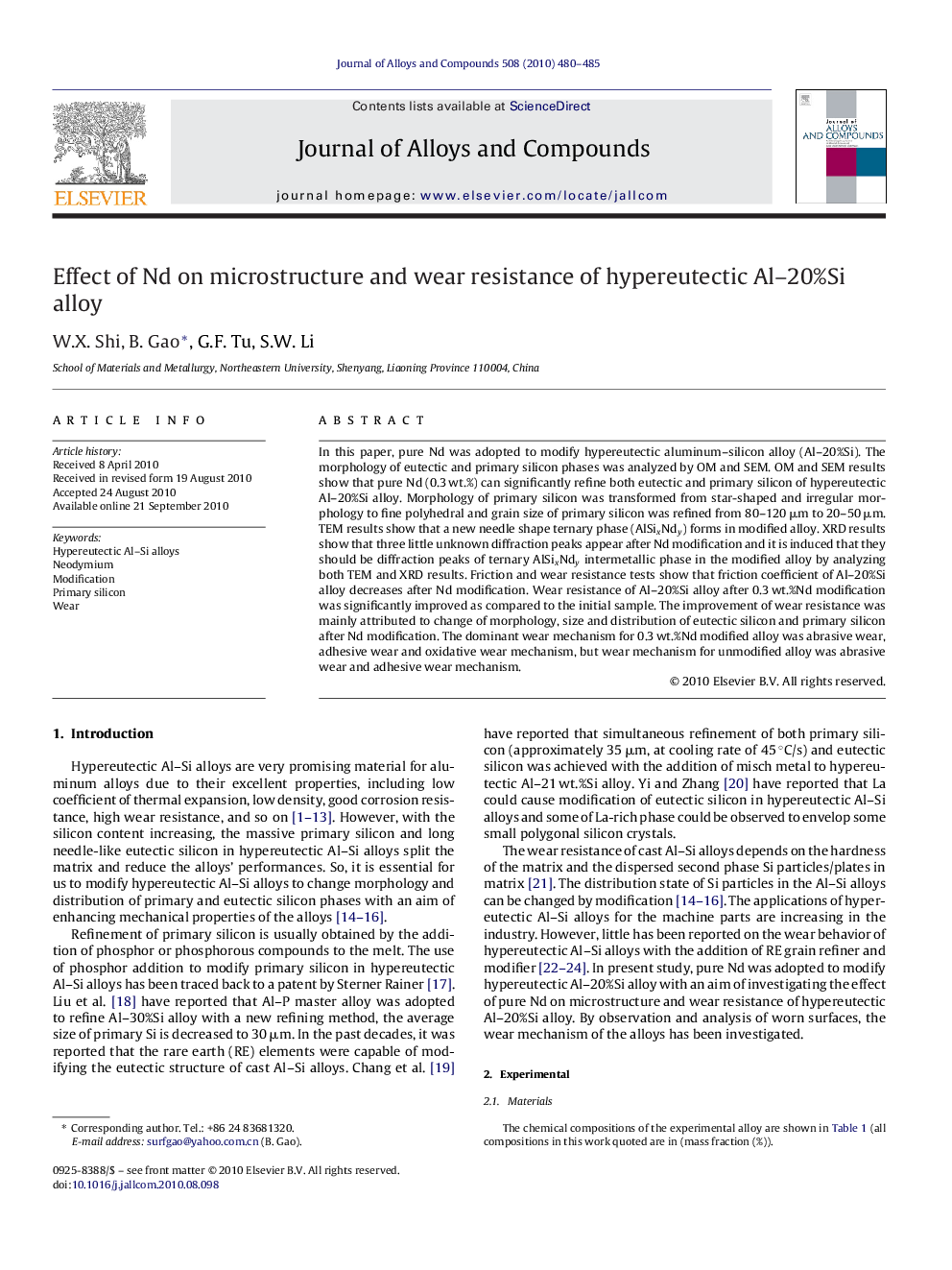| کد مقاله | کد نشریه | سال انتشار | مقاله انگلیسی | نسخه تمام متن |
|---|---|---|---|---|
| 1619273 | 1005718 | 2010 | 6 صفحه PDF | دانلود رایگان |

In this paper, pure Nd was adopted to modify hypereutectic aluminum–silicon alloy (Al–20%Si). The morphology of eutectic and primary silicon phases was analyzed by OM and SEM. OM and SEM results show that pure Nd (0.3 wt.%) can significantly refine both eutectic and primary silicon of hypereutectic Al–20%Si alloy. Morphology of primary silicon was transformed from star-shaped and irregular morphology to fine polyhedral and grain size of primary silicon was refined from 80–120 μm to 20–50 μm. TEM results show that a new needle shape ternary phase (AlSixNdy) forms in modified alloy. XRD results show that three little unknown diffraction peaks appear after Nd modification and it is induced that they should be diffraction peaks of ternary AlSixNdy intermetallic phase in the modified alloy by analyzing both TEM and XRD results. Friction and wear resistance tests show that friction coefficient of Al–20%Si alloy decreases after Nd modification. Wear resistance of Al–20%Si alloy after 0.3 wt.%Nd modification was significantly improved as compared to the initial sample. The improvement of wear resistance was mainly attributed to change of morphology, size and distribution of eutectic silicon and primary silicon after Nd modification. The dominant wear mechanism for 0.3 wt.%Nd modified alloy was abrasive wear, adhesive wear and oxidative wear mechanism, but wear mechanism for unmodified alloy was abrasive wear and adhesive wear mechanism.
Research highlightsFirstly, the sizes of primary silicon of hypereutectic Al–20%Si alloy after modified were apparently refined. Secondly, wear resistance of hypereutectic Al–20%Si alloy modified by Nd was significantly improved. Thirdly, the dominant wear mechanisms for the alloy before after modification were different. Finally, a new ternary Al–Si–Nd phase forms after 0.3wt.%Nd modification.
Journal: Journal of Alloys and Compounds - Volume 508, Issue 2, 22 October 2010, Pages 480–485